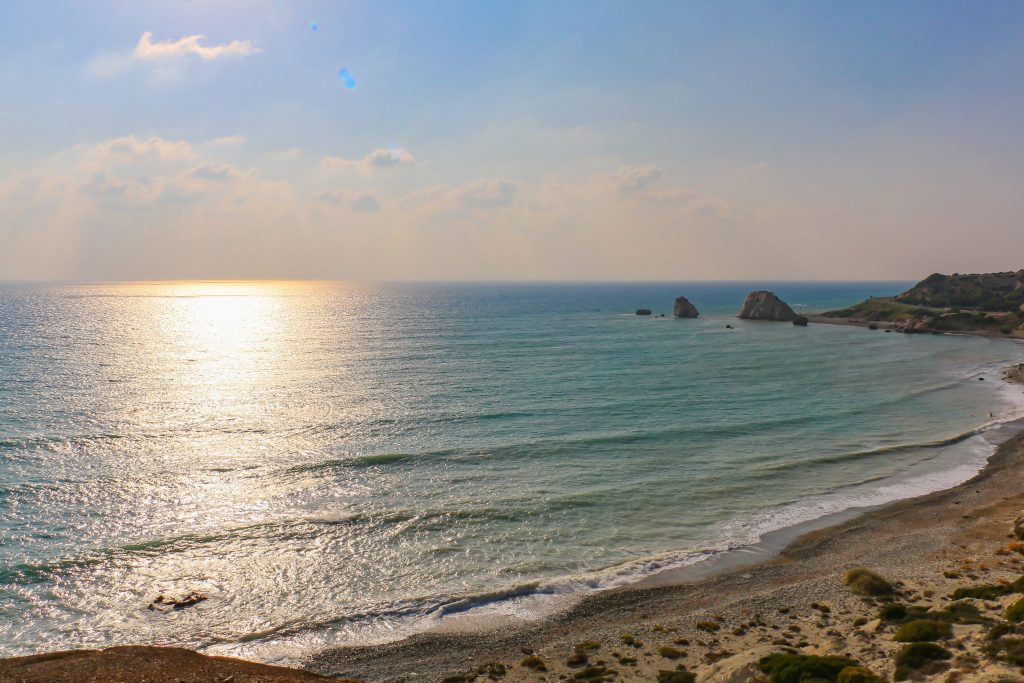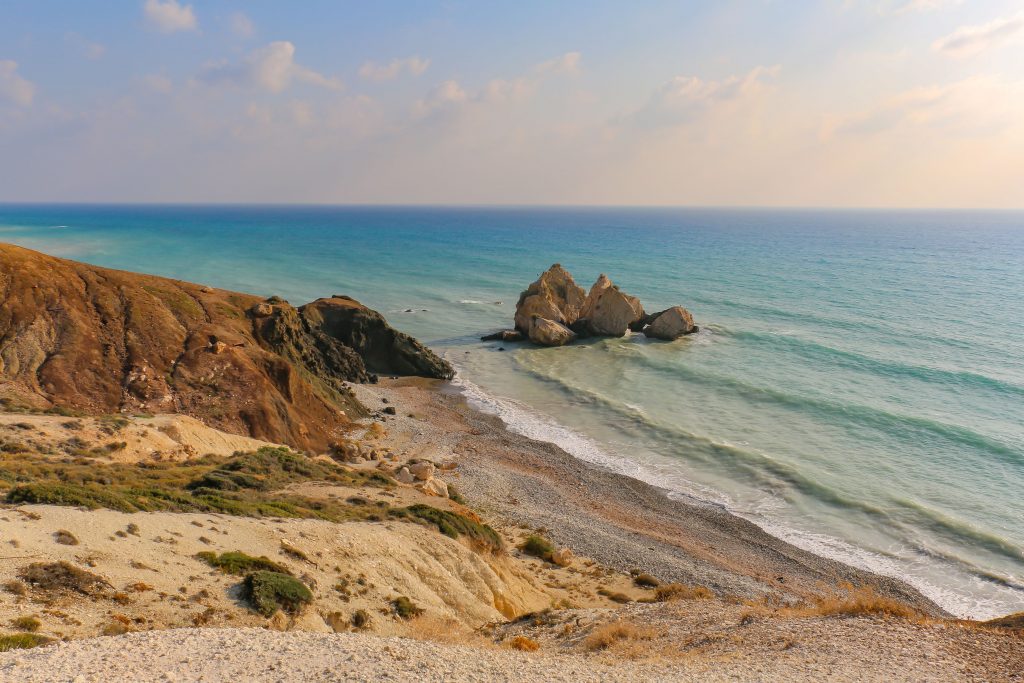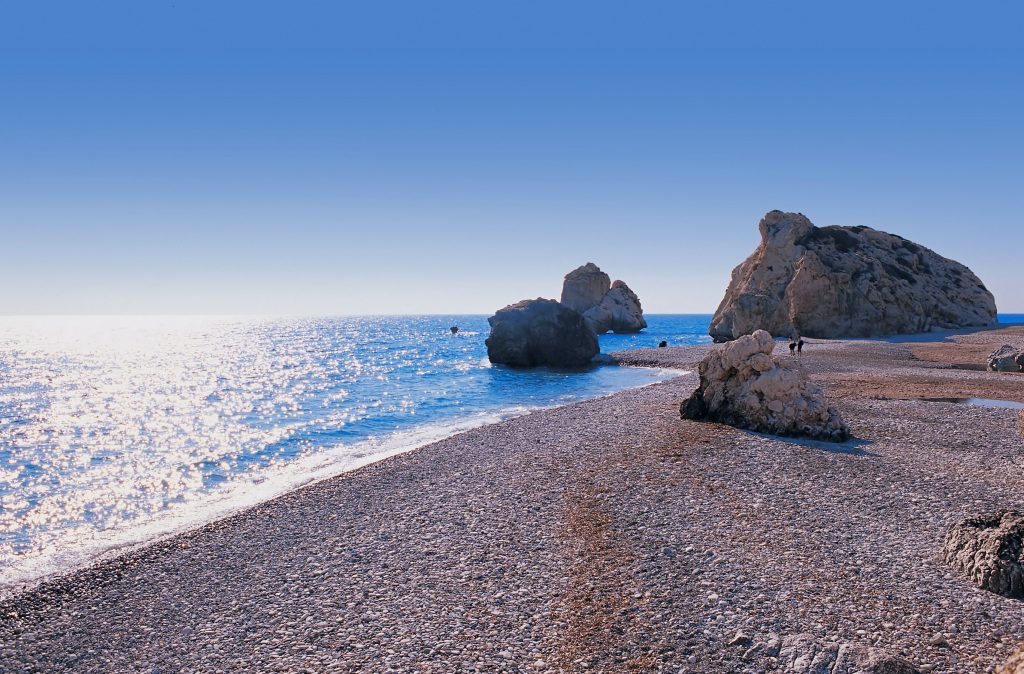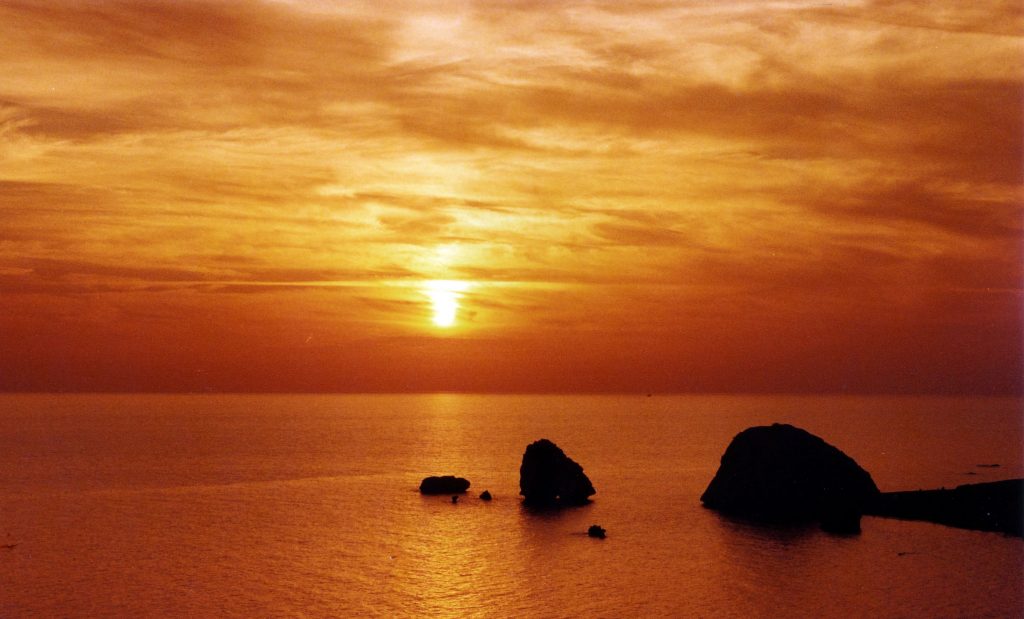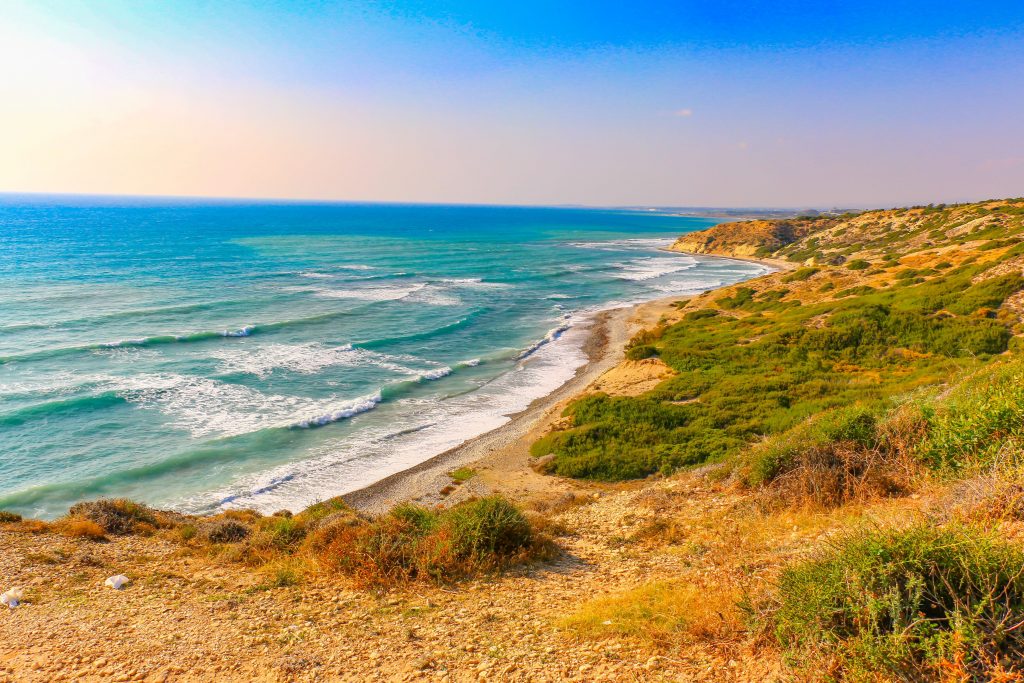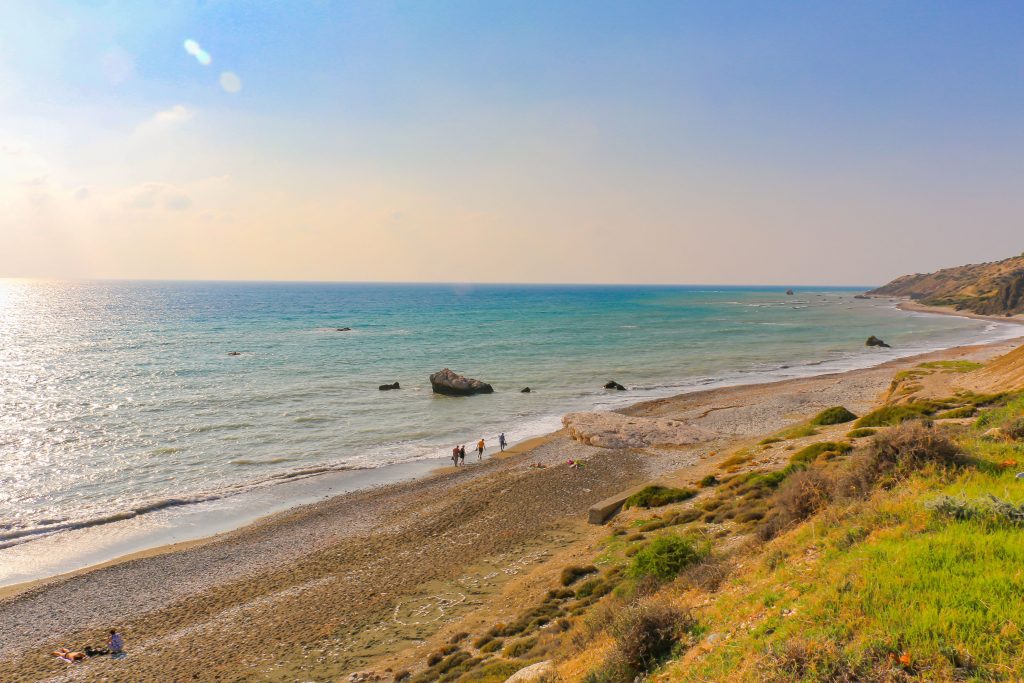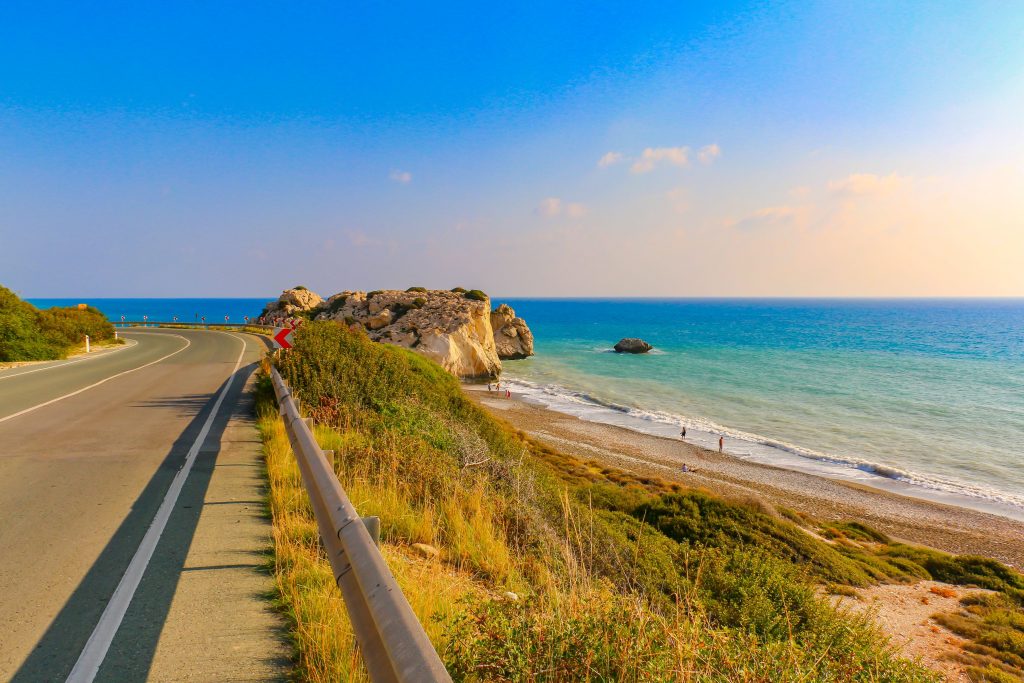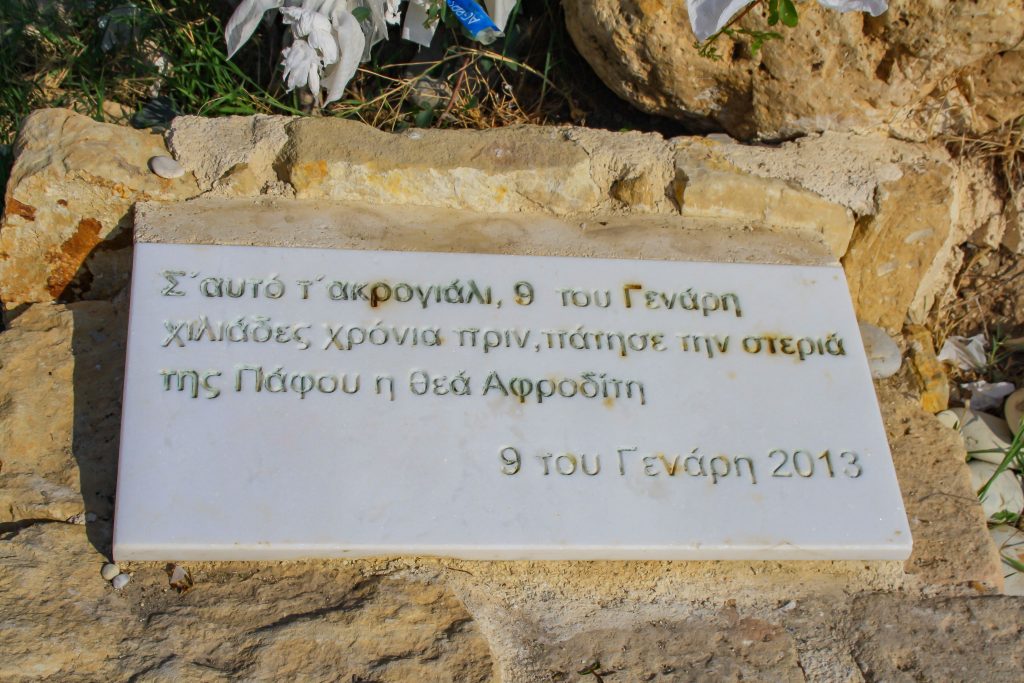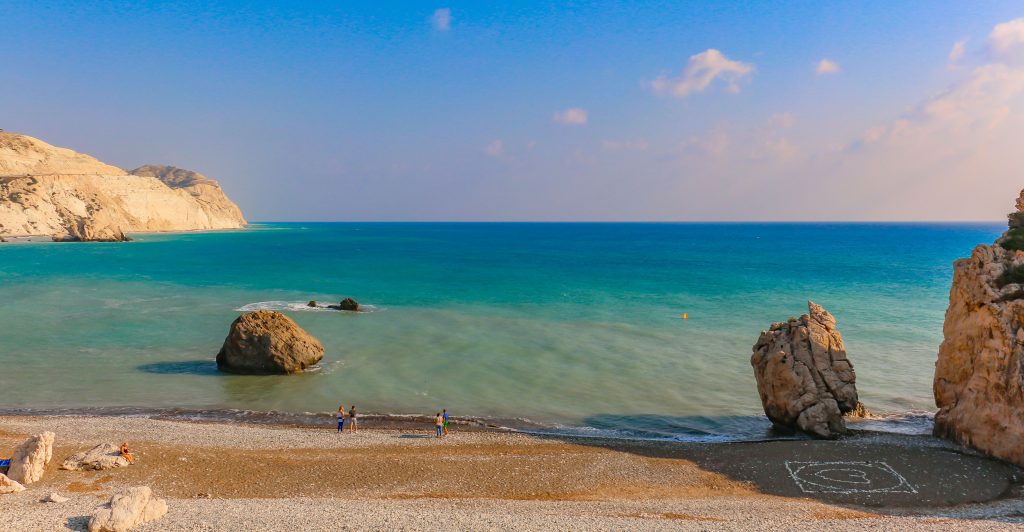Petra tou Romiou
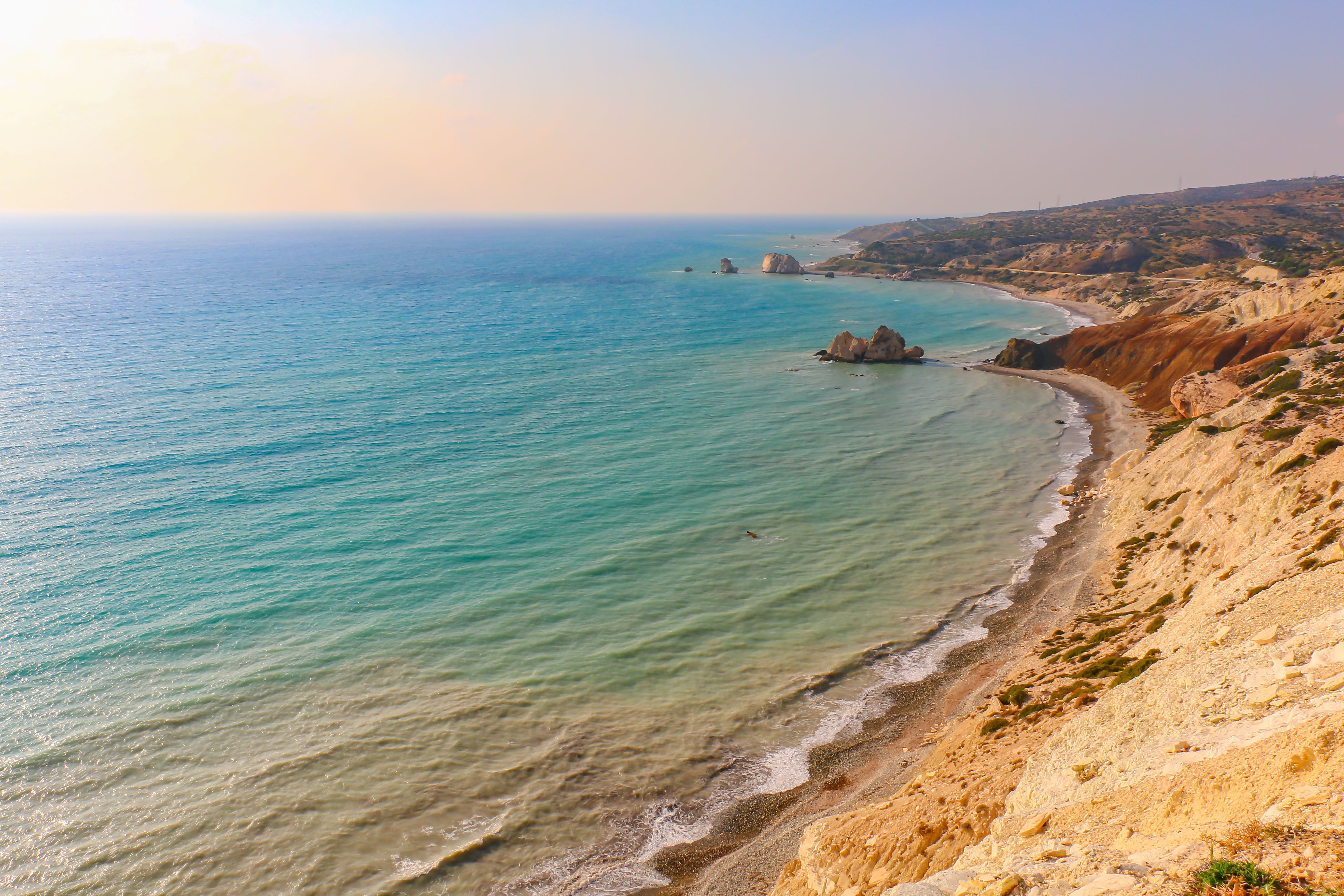
One of the most popular natural attractions of southwest Cyprus and probably one of the most popular stones of the world, as it gets visited by thousands every year, is Petra tou Romiou or the stone of the Greek. It is located on the homonymous beach in the Kouklia region, 25 kilometers east of Paphos, about 45 kilometers from Limassol and 130 kilometers from Nicossia.
The huge stone which is on the edge of Paphos province, southwest coast of Cyprus, is a unique geological phenomenon which ancient Greeks connected to Aphrodite, the goddess of love and beauty. According to tradition, Gaia asked Kronos to mutilate his father Uranus. He then mutilated his father’s genitals which fell into the sea and this crated the froth in which Aphodite was born. The Greek name of the stone is connected to another hero of medieval Hellenism, Digenis Akritas who according to tradition picked up and threw this stone in the sea destroying the Saracens’ ships who were ready to raid the bay. There also more modern stories about the stone like the one in late 40s where an American tycoon tried to haul it to his private island but failed. Local tradition says that whoever swims around the rock naked, under the full moon will stay young forever.
Since 1998 it has been part of NATURA 2000 network due to the lizard Cypriota Curcutius which lives there and during summer it feeds only on seaweed. Geologically this particular rock is part of three mountain ranges rising from the sea area between Cyprus and Egypt, and has the same composition as the Pentadaktylos and the mountain Taurus of southern Turkey. Also fossils of Halobia have been found on it which makes it definitely older than 210 million years. Additionally on the southern part of the rock some relief inscriptions have been found that are now in the museum of the University of Cyprus.
Petra tou Romiou is also one of the stops of the cultural route ‘Aphroditi’ and a favorite spot for hikers who like to explore the footpaths and the nature while the Forest Department created the Rantin Park from which one can admire the beautiful view. Finally, not far away there is the ancient city of Paphos, known today as Palaipaphos.

